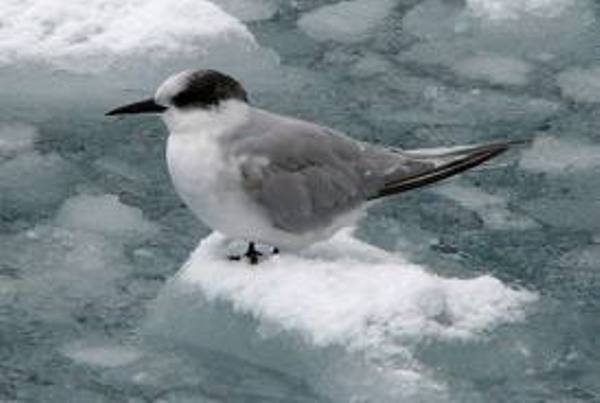
One of the most life-threatening environmental problems is the global warming. Global warming talks and articles seem to flood the magazines and internet. This is no false alarm since we are witnessing the ravaging effects of global warming on the environment. Global warming in a nutshell is the increase in the average global temperature due to increase in the amount of greenhouse gases in the atmosphere. These greenhouse gases are a threat because they absorb the heat from sunâs radiation and radiate the heat back to the earthâs surface, thus increasing the temperature on earth.
So, contemplating on how these greenhouse gases get accumulated more than what can be used up per se, is due to the indiscriminate activities of men. Exhaust from vehicles, burning of fossil fuels, falling of trees for land procurement are few of the many factors that contribute to global warming. The effects of global warming have been severe in the recent times ultimately challenging life on earth. Many animal species have become endangered and extinct in the past decade due to global warming.Let’s check out 10 most disturbing effects of global warming on our environment.
1. Habitats vanishing/becoming uninhabitable:

A number of species are rendered homeless or struggling from in-adaptability to the change in temperature. With the increase in global temperature, the glaciers of the poles melt at a faster rate than ever. At this rate, the habitats for the polar bear, penguin, harp seal, snow goose etc are shrinking.
2. Lack/Loss of food:

Itâs a food chain and every organism is dependent on one another for survival. It is this food chain that strikes a balance in the maintenance of the number of individuals in each species. When one race becomes endangered or extinct, the other one dependent on it will face a setback more so if those races are its staple food. For instance, the Snowy Owl and the Arctic Fox feed on the Lemming. Since these Lemmings have begun to suffer from the effects of global warming, the other animals dependent on them are at stake too. Similarly, the Koala bears have reduced in number.
3. Migration patterns:

Many bird species are migrating towards north in search of a more habitable temperature. In the process, the actual habitat of these birds for thousands of years have changed resulting in affecting other species as well in that region. The Red-breasted Merganser for instance has moved 317 miles north. This fish-eating duck is normally found in salt water lakes during the winters but in the last 40 years, these birds are found in fresh water lakes of North to accommodate them at conducive winter temperatures. This has decreased their population greatly in states like Kentucky and Nevada.
4. Hibernation patterns:
Hibernation patterns of animals have changed incredibly. Some hibernating animals are found to hibernate for shorter period or do not hibernate at all. This naturally presents them to their predator and get killed at a higher rate or die out of starvation. The marmot of the Colorado wakes up from hibernation a month earlier since the temperature has risen by 2.5 degrees Fahrenheit. In parts of the United States, the Chipmunks skipped hibernation and many of them are reported to have died out of starvation.
5. Endangerment:
Adelie Penguins have become an endangered species since the amount of algae and Krill shrimp forming the penguinâs diet have diminished greatly. In 2002, a mass death of the Monarch Butterflies occurred since their faithful fir trees of Mexico no more promise them shelter during winter as rains become a threat instead.
6. The waters:
The water bodies are becoming increasingly rich in carbon dioxide content. The coral reefs are dying die to increased carbon dioxide content in waters. The trouts for example are not able to adapt to the increase in temperature of the water bodies. They require a glacial temperature to survive.
7. Acidification:
As a result of increase in green house gases in the atmosphere, acid rains have become very common throughout the world. Acid rains affect animalsâ skin that have a stray habitat and are exposed to the rain. This is not an effect on just animals but on human beings too. Besides, the oceans are becoming increasingly acidic depleting calcium carbonate for shell fish, oysters etc.
8. Disappearing water bodies:

Due to average increase in global temperature, many lakes, rivers and ponds have dried up rendering thousands of fishes homeless that has resulted in their death.
9. Extremely hot summers:
Global warming has rendered summers hotter than ever in tropical lands. Summer in many tropical countries like India has witnessed mass death of poultry and cattle due to unbearable temperatures and dehydration.
10. Breeding season changed:
The breeding pattern of many animals has changed world wide due to extensions or shrinkage of summer and winter respectively. Cats are said to breed during spring and early summer. With extension of these to seasons in the western part of the world, the breeding season of cats has extended too.
Mostly, the animals found in the Arctic have been affected due to global warming. These animals’ natural habitats are shrinking at a higher rate. The Emperor Penguin, Ringed seals and the Arctic fox of the North pole have become endangered. The Leatherback turtles numbers have been greatly affected since they are unable to guard their young ones given the beach sand temperatures. On the other hand, birds like Flamingos that thrive in tropical wet lands have become reduced in population due to global warming.




